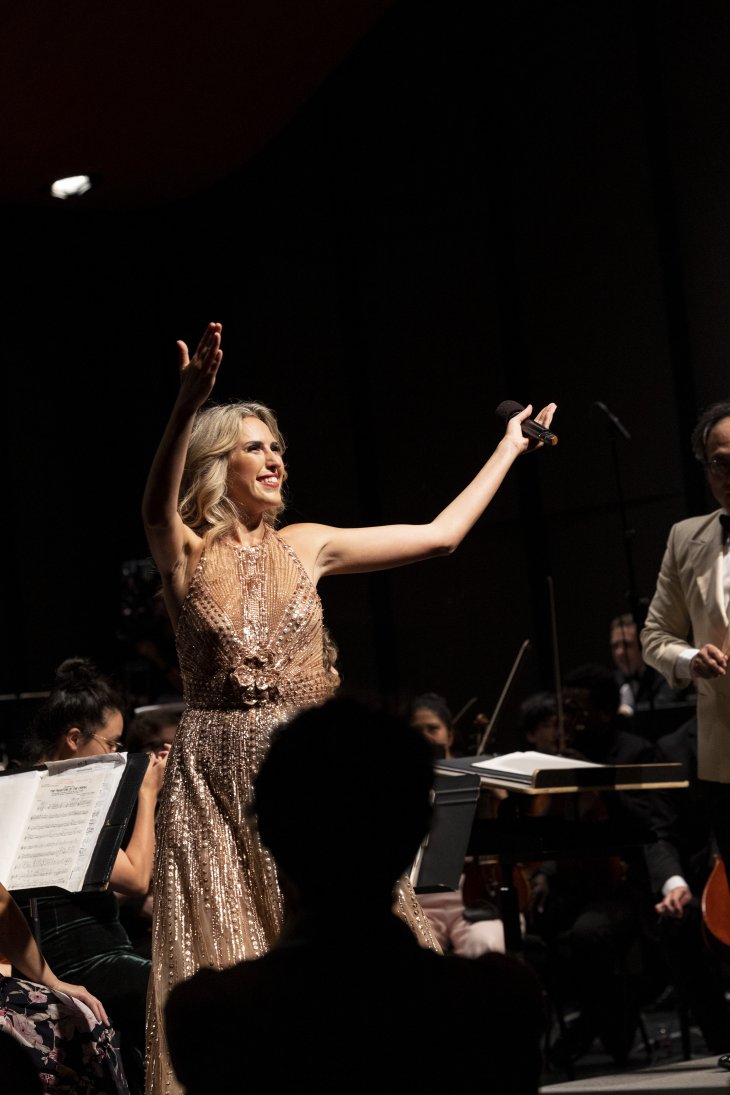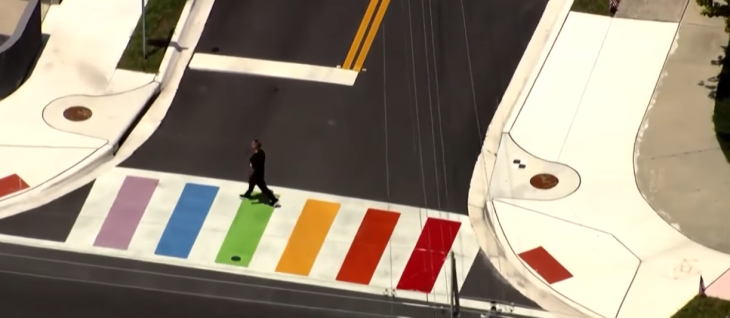By Dolores Quintana
Filled with grandeur as stark as the Brutalist architecture designed by László Tóth, The Brutalist is epic in scale, but tender with the details of life. The Brutalist is a mythic fable of an artist and creative spirit who slips through life as an observer and as a tormented human being who sluffs off pain as if it were a dinner jacket.
The film is three and a half hours long, with a short intermission, but worth every second. It is an immense achievement, especially since the budget for the film is only $10 million, but it looks like it cost much more. We are so lucky, as cinema fans, in 2024, as our theaters are full of artistic wonders, such as The Brutalist. Certainly, The Brutalist is one of the best films of the year. You can buy tickets here.
Escaping post-war Europe, visionary architect László Toth arrives in America to rebuild his life, his work, and his marriage to his wife Erzsébet after being forced apart during wartime by shifting borders and regimes. On his own in a strange new country, László settles in Pennsylvania, where the wealthy and prominent industrialist Harrison Lee Van Buren recognizes his talent for building. But power and agency come at a heavy cost.
It shows the doomed relationship between the patron who desperately desires the creativity of the artist and the destructive vengeance that the need for control wreaks on the heart and soul of the artist. I cannot imagine that this theme does not come from the personal well of the creators of the film especially now, on the precipice of AI and tech bros with axes to grind seeking to become artists without earning the title. Certainly, there is no better time for it.
It also speaks of the pain of the immigrant who is othered by bigotry and fear and leaves them as a phantom without a home. Artists and immigrants are similar types in the minds of tyrants, useful to blame and to frame with the mantle of criminals, deviants, fools, and villains.
Adrian Brody’s László Tóth is an artist with a heart full of secrets. He can express himself easily should he choose to, but he keeps his inner core hidden from the tentacles of the curious and the greedy. His will is titanic as is his anger should it be aroused. But because he doesn’t yell abuse at others, under normal circumstances, he is considered effete.
The cast is uniformly excellent with so much said without speaking, both the innocent and the guilty. This is a film that deserves to be recognized at awards time, with its layered and complex themes and characterization. It’s Oscar quality made with obvious love and care by the artists and craftspeople. Brody, Felicity Jones, Raffey Cassidy, Stacy Martin, Emma Laird, Isaach de Bankolé, and Alessandro Nivola inhabit these period roles with utter sincerity and truth. Guy Pearce and Joe Alwyn give portraits of unhappy men who never understand themselves and the inner emptiness that causes them to act out in vicious ways.
The symbolism of the film, especially, the upside-down image of The Statue of Liberty, is a reference to turning national symbols upside down, like the American flag, to suggest danger or distress. It sounds a note of warning at a moment of triumph and seeming victory.
What Brady Corbet and Mona Fastvold have crafted in The Brutalist is a film where a creative mind must navigate a dangerous minefield even after he escapes the horrors of World War II Europe. It shows that he is not much safer in the promised land of the United States.
It confronts the intersection between art and commerce, since art has been harnessed to profit, much to its detriment. Tóth is lifted out of honest poverty after being blamed and tossed aside by someone he trusted, but everything he has been offered has strings attached. He is fitted for a set of invisible chains by the industrialist Harrison Lee Van Buren, who envies and hates Tóth’s artistic soul, empathy, and intellect.
The envy of a patron is that they cannot create art themselves, so they seek to control the artists who can. By dangling money, stability, and status in front of a destitute artist, they are frequently successful in purchasing the right to claim that they are responsible for the art through the control of the artist. But their seemingly generous gifts always have a large and largely invisible price tag: that the artist must bow and scrape before them.
The plight of the artist, who is not wealthy, and the immigrant are very similar. You are only valued for what you produce and how what you produce pleases your boss. You are not valued for the qualities that make you who you are and make you capable of extraordinary feats, you are only given food and money so long as what you do pleases those in power. You have only the power you are loaned by them and they can yank it back as soon as they are offended or wish to see you dance.
The film actually shows how the patron differs from the artist. In one scene,Tóth answers a question, and Van Buren agrees and responds in a supposedly sagacious way, but it is clear that what Tóth said flew over his head.
It shows that the patrons, studios, industrialists, and tech bros understand nothing about art and creation. Because they are unwilling to take the risk of truly expressing themselves and, most importantly, listening to others, they have no hope of creating anything and must buy more artists or craftspeople. There is a vast emptiness inside them that can never filled, even with the casual destruction of a person’s life. They are hollow, because deep down, they know the truth, even if they would never admit it.
Corbet uses the process of VistaVision, which is his sense of experimentation at work, and in the credits of the film, as images and titles move from the right to the left of the screen. Since the film is about a Jewish architect, and Hebrew is written and read from right to left, I’m sure that’s not a coincidence. The cinematography of Lol Crawley is opulent with a depth that is not showy but adds sweep and substance to the film. It is rich in the way that the auteur films of the 70s and early 1980s were.
The soundtrack by Daniel Blumberg is romantic and instantly memorable. After you have seen the film, you won’t be able to get the main theme out of your head. Overture (Ship) is one of the 21st century’s new and important pieces of film music. It starts with swirling strings and opens out into a triumphant blast, pares itself down to odd rhythmic syncopation, and returns to the beginning the same way an artist who picks themselves up off the ground begins again.
Emotional carnage, steadfast courage, and villainy among stark white Italian marble and the fields of Philadelphia create an ambitious and extraordinary canvas of the human soul in Brady Corbet and Mona Fastvold’s film, The Brutalist. Languorous sensuality against the cold grey stone of Tóth’s structures etch the themes of Brutalist architecture, which is considered socialist architecture of and for the people, into the film. The secrets of the artist and their intent are forever enshrined in the artist’s creations and the many chambers of the film.
The patrons will never see it, but it will always be there.























